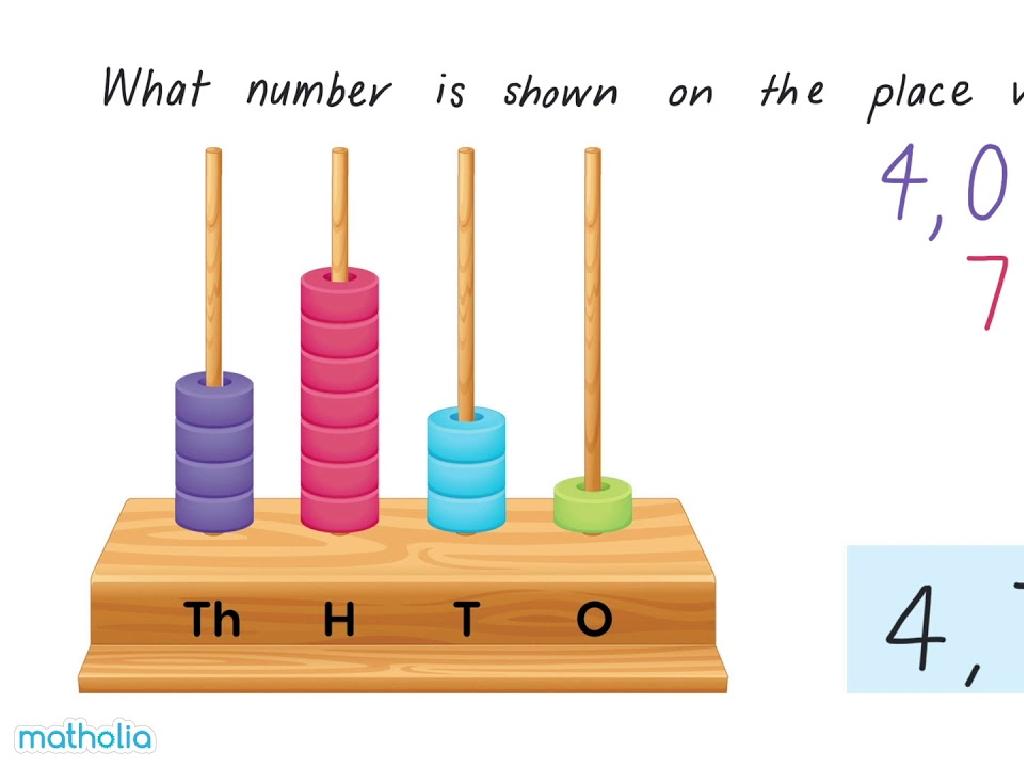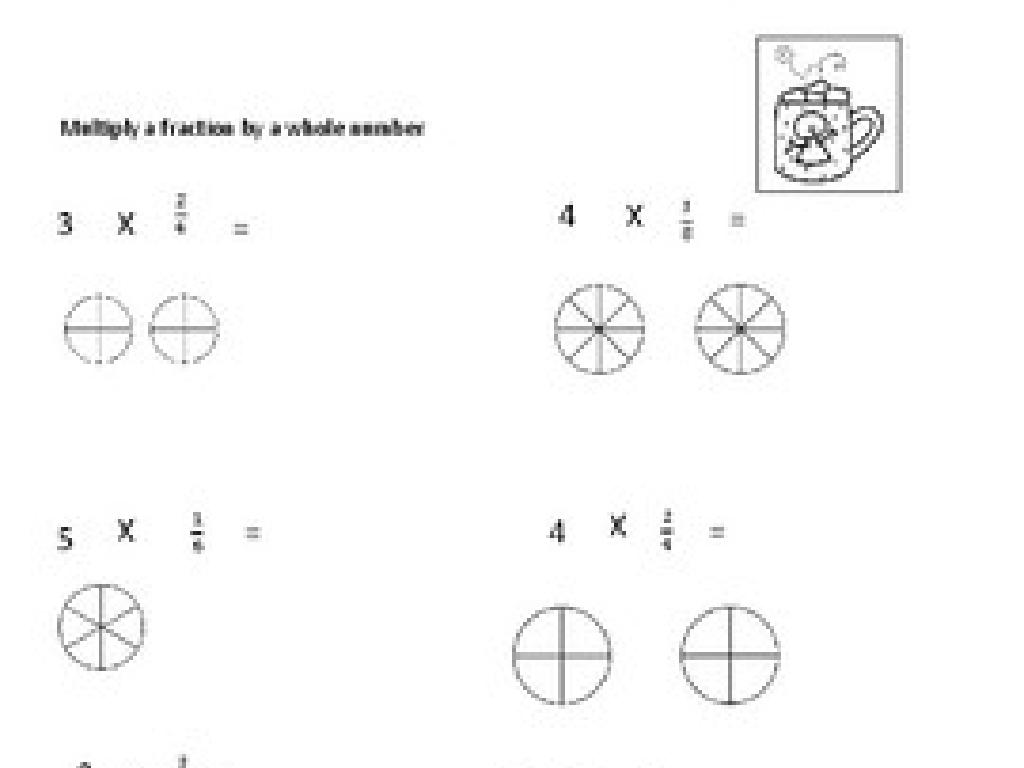Solve Equations: Complete The Solution
Subject: Math
Grade: Seventh grade
Topic: One-Variable Equations
Please LOG IN to download the presentation. Access is available to registered users only.
View More Content
Introduction to One-Variable Equations
– Define one-variable equations
– An equation with one unknown, e.g., x + 5 = 12
– Solving an equation explained
– Finding the value of the variable that makes the equation true
– Examples of one-variable equations
– Simple equations like 3x = 9 or x/4 = 2
– Practice solving with examples
– Use examples to demonstrate solving for x
|
This slide introduces the concept of one-variable equations, which are the foundation of algebra. Start by defining what a one-variable equation is and emphasize that it contains only one unknown, typically represented by ‘x’. Explain that solving an equation means finding the value of the unknown that makes the equation true. Provide simple examples such as 3x = 9 or x/4 = 2 to illustrate the concept. Encourage students to practice solving these equations by performing inverse operations to isolate the variable. The goal is for students to become comfortable with the idea of maintaining balance in an equation while finding the value of the unknown.
Parts of an Equation: Building Blocks
– Identify equation components
– Variables, coefficients, constants are the key parts.
– Understand the equals sign
– The equals sign (=) shows balance; both sides are equal.
– Balance both sides
– To solve, make changes equally on both sides.
– Practice with examples
– Let’s solve x + 3 = 7 and 2x = 10 together.
|
This slide introduces the fundamental components of an equation, which are crucial for understanding how to solve them. Emphasize that variables represent unknown values, coefficients are numbers multiplied by variables, and constants are fixed numbers. The equals sign is the balance point, indicating that both sides of the equation have the same value. When solving equations, whatever operation is performed on one side must also be done to the other to maintain balance. Provide examples for the class to solve collectively, reinforcing the concept of maintaining balance while solving for the variable. Encourage students to ask questions and work through the examples step by step.
Solving Simple One-Variable Equations
– Isolate variable with addition/subtraction
– Move numbers by adding/subtracting to get the variable alone
– Solve variable using multiplication/division
– Multiply or divide to find the value of the variable
– Check the solution’s accuracy
– Substitute the solution back into the original equation to verify
|
This slide is aimed at teaching students the foundational steps to solve simple one-variable equations. Start by demonstrating how to use addition or subtraction to move numbers from one side of the equation to the other, thus isolating the variable. Next, show how to use multiplication or division to solve for the variable’s value. Emphasize the importance of performing the same operation on both sides of the equation to maintain equality. Finally, teach students to always check their solutions by substituting the value back into the original equation to ensure it satisfies the equation. Provide several examples and practice problems to reinforce these concepts. Encourage students to ask questions if they’re unsure about any step.
Completing the Solution of One-Variable Equations
– Understanding ‘complete the solution’
– It means finding the value of the variable that makes the equation true.
– Recognizing unsolved equations
– An equation with variables on both sides might not be fully solved.
– Steps to solve equations fully
– Combine like terms, isolate the variable, and check your solution.
– Practice with examples
– We’ll solve x + 3 = 7 and 2y – 4 = y + 2 together.
|
This slide introduces the concept of ‘completing the solution’ in one-variable equations. Start by explaining that to ‘complete the solution’ means to find the value of the variable that satisfies the equation. Highlight the importance of recognizing when an equation is not fully solved, which is often the case when variables appear on both sides of the equation. Walk through the steps necessary to fully solve an equation: combining like terms, isolating the variable on one side, and checking the solution by substituting it back into the original equation. Provide practice examples for the class to work through, such as x + 3 = 7 and 2y – 4 = y + 2, to reinforce the concept.
Solving One-Variable Equations: Practice
– Solve 3x + 4 = 19
– Subtract 4 from both sides, then divide by 3
– Solve 5x – 2 = 3x + 8
– Subtract 3x from both sides, then add 2 and divide by 2
|
This slide is designed for a hands-on practice session on solving one-variable equations. Start with Example 1 by demonstrating how to isolate the variable. Subtract 4 from both sides to get 3x = 15, then divide both sides by 3 to find x = 5. For Example 2, show the students how to get all the variable terms on one side and the constants on the other. Subtract 3x from both sides to get 2x – 2 = 8, then add 2 to both sides to get 2x = 10, and finally divide by 2 to find x = 5. Encourage students to work through these examples in their notebooks, and then solve similar problems on their own. Provide immediate feedback and support as needed. This practice will help solidify their understanding of solving equations.
Common Mistakes in Solving Equations
– Apply changes to both sides
– Always perform the same mathematical operation on each side of the equation.
– Keep operation signs straight
– It’s easy to confuse + and – or × and ÷, be careful!
– Simplify the solution fully
– Check that the equation is in its simplest form before finishing.
|
This slide addresses frequent errors students make when solving one-variable equations. Emphasize the importance of maintaining balance in an equation by applying any addition, subtraction, multiplication, or division to both sides. Stress the need for attention to detail with operation signs to avoid unnecessary mistakes. Finally, remind students to simplify their answers completely, checking for any common factors or terms that can be combined. Provide examples of each mistake and how to correct them, and encourage students to double-check their work before considering it complete.
Class Activity: Equation Relay
– Split into teams for the relay
– Each member solves a step
– Pass the marker after your turn
– First team to finish wins
– Ensure the solution and check are correct
|
This activity is designed to encourage teamwork and understanding of solving one-variable equations. Divide the class into small groups, and have each team line up in front of the board. Present an equation to each team. The first student in line solves the first step, then passes the marker to the next team member, who solves the next step, and so on. The team that correctly solves and checks their equation first is the winner. As a teacher, prepare several equations of varying difficulty to accommodate different skill levels. Monitor the activity to ensure that each step is correctly solved before the next student continues. This activity promotes cooperative learning and reinforces the concept of sequential steps in solving equations.
Homework and Wrap-up: Mastering Equations
– Practice complex equations at home
– Try solving equations with variables on both sides.
– Next class: Systems of Equations
– We’ll explore how to solve when two equations work together.
– Review today’s material
– Address any final questions
– Feel free to ask now or email later!
|
As we conclude today’s lesson on solving one-variable equations, assign homework that includes more challenging problems, encouraging students to apply the techniques learned in class. Preview the next topic, Systems of Equations, to pique their interest. Remind students to review the material covered today to reinforce their understanding. Finally, open the floor for any questions, ensuring that students feel comfortable with the concepts before leaving. Provide additional examples or clarification as needed, and remind them that they can reach out for help if questions arise while doing their homework.






